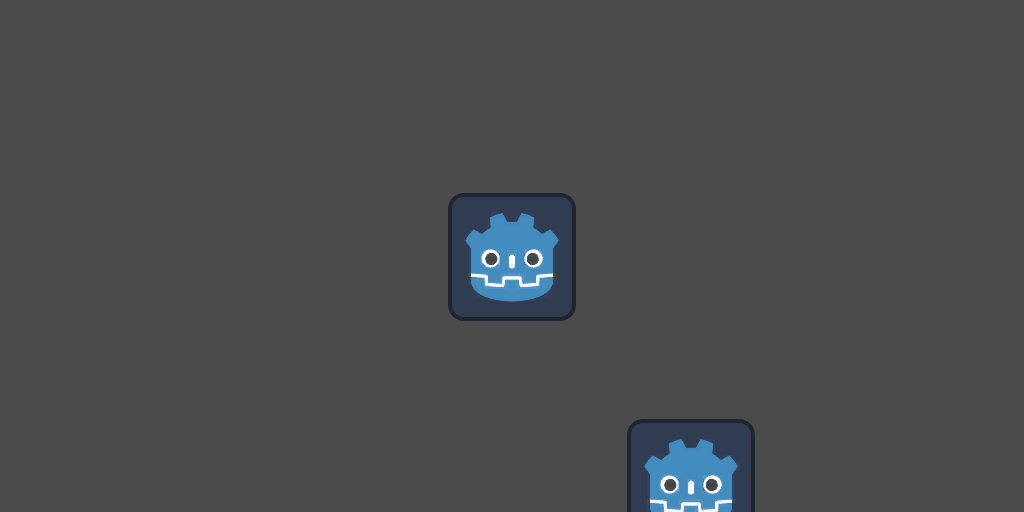前言
书接上回,我谈到了Unity中的协程的重要性,虽然协程不是游戏开发“必要的”,但是它可以在很多地方发挥优势。
为了在Godot找回熟悉的Unity协程开发手感,不得不自己做一个协程系统,幸运的是,有了Unity的开发经验和协程使用模型,这个过程不算困难。
这篇文章主要记述了开发Godot协程时遇到的困难与经验总结。使用的语言是纯C#。
Godot版本:4.3 mono
问题
什么是协程?
简单来讲,协程是轻量级,用户级的线程,通过“分时复用” 的方式模拟多线程操作。
协程是一个“伪线程”,它其实只在一个线程上执行,但是通过执行“挂起”和“恢复”等操作,可以实现“不同时间执行不同任务”或者说“一个任务分到多个帧内完成”。
协程的优点就是缺点,缺点就是优点。它没有直接操作线程繁琐,也无法发挥多核处理器的优势,所以它并非“必要的”。
不过对于游戏开发而言,游戏一般只有一个“主循环”,或者说一个主要线程,所以资源和数据(也可以说“上下文”(context))主要就只在一个线程中。所以一般情况我们是不会用到很多线程的,这时协程就是一个很好的选择,不必烦恼上下文同步等等多线程难题,可以直接拿来就用,还能不阻塞游戏主循环。
理论上协程结合异步能发挥最大效果,因为协程中不能出现阻塞行为,异步可以有效避免阻塞,但是在写这篇文章时,未考虑到实现协程的异步。
Unity中的协程?
“师夷长技以制夷”(doge),我们虽然要创建自己的协程系统,但好歹也给个学习参考方向吧,这不,Unity的协程为我们提供了一个很好的思路——迭代器实现协程。
需要明确的是,这里的迭代器是指C#内置的迭代器,C#语言从语法层面上内置了很多种设计模式,最出名的应该就是“委托和事件”,它们隶属于“观察者模式”。而“迭代器模式”也被C#吃进肚子了。
所以Unity的协程是基于C#的迭代器实现的,为什么是它?
迭代器与协程?
先说结论,迭代器跟协程一点关系都没有。
根据我们之前所说,协程的核心是通过执行“挂起”和“恢复”实现“分时复用”,所以只要能满足这个需求,用什么来实现协程都可以。
那么Unity为什么选择了用迭代器的方式呢?我也不懂,毕竟人心不可测,我想可能是因为它有很多好处吧。
C#中的迭代器
C#对“迭代器模式”提供“语法层面”上的支持,具体呢可以到官方文档了解,关键核心其实就是IEnumerator和yield。其实我觉得文档对这两者的关系什么的说得不是很明确,所以接下来我就按自己的思路去说吧:
IEnumerator,枚举器接口,是实现迭代器的核心接口(所以它为什么不叫迭代器,比如什么IIterator之类的!!!!!!!)。接口中的成员就是实现迭代器功能所需要的成员,当我们实现一个迭代器后,可以手动设计迭代方式,比如“while循环遍历,满足条件就MoveNext”。
或者用语法糖foreach,自动为我们生成完善的上述流程(foreach遍历本质上就是生成一套迭代器遍历流程的语法糖)。
又或者可以使用yield关键字轻松实现迭代器功能,使用yield关键字的方法(或函数)就是“迭代器”方法(iterator methods)。yield有“产出,屈服,让步,弯曲”等意思,我个人偏向第一个意思,这样子就能比较好解释yield的功能,就是生出一个迭代出来的值。最好自己去看一下yield的用法,每次yield都会将当前执行的方法“挂起”,带着yield出来的值返回到调用者的执行流中。然后在下一次迭代时“恢复”到上一次yield语句之后继续执行,直到碰到下一个yield或yield break(用来终止迭代的)。
迭代器实现协程
等等,是不是很熟悉?怎么又有“挂起”又有“恢复”的,难道说?!是的,我们可以通过使用迭代器方法快速实现协程,因为迭代器方法不仅能满足协程的需求,还便于使用,借由C#超级糖氏语法的支持,让协程的编写和调用易于实现(但是易不易于理解我就不好说了)。
具体的思路就是,迭代器方法执行的是协程的“内容”,yield语句提供“挂起”和“恢复”功能,从而实现协程。至于迭代器方法,我个人简单的理解为“专用于迭代器的Lambda表达式”,结合上yield,它可以方便地创建出一个IEnumerator,而且类似一个“匿名的”IEnumerator。
设计协程系统
思路倒是有了,但还是不会设计整个系统怎么办。那么看看Unity吧,我有段时间没用Unity了,所以可能记不清。不过大体思路还是有印象的,实在不行还能网上找找教程不是嘛。
Unity中的协程系统是以单个MonoBehaviour类为执行单位的,也就是一般情况下只有MonoBehaviour类能使用协程,我也见过有些开发者是用一个继承MonoBehaviour的管理类单独控制所有协程的。
与我而言,还是偏向于分划而治,也就是自己管理自己的协程(其实是因为这样就不用写一个全局管理类了);还有一点就是目前对Godot不够了解,所以不敢贸然乱写,以后有机会可以继续拓展。
最终的结果就是:我用抽象了一个“协程”类,它的每个实例就代表一个协程。构造实例需要用到一个迭代器方法,也就是我们要执行的具体方法。我们可以通过读写类中的一些状态变量,控制协程的执行。
源码
using System.Collections;namespace GoDogKit
{// Base class of CoroutineTaskpublic abstract class CoroutineTask{public abstract void Process(IEnumerator enumerator, double delta);public abstract bool IsDone(IEnumerator enumerator);}/// <summary>/// Used for stun a coroutine in a certain duration./// </summary>public class WaitForSeconds : CoroutineTask{private readonly double duration;private double currentTime;public WaitForSeconds(double duration){this.duration = duration;currentTime = 0;}public override void Process(IEnumerator enumerator, double delta) => currentTime += delta;public override bool IsDone(IEnumerator enumerator) => currentTime >= duration;}/// <summary>/// Represents a coroutine, used a IEnumerators to represent the coroutine's logic. /// </summary>public class Coroutine{private readonly IEnumerator enumerator;private bool m_processable = false;private bool m_isDone = false;public Coroutine(IEnumerator enumerator, bool autoStart = true){this.enumerator = enumerator;m_processable = autoStart;}public Coroutine(IEnumerable enumerable, bool autoStart = true){enumerator = enumerable.GetEnumerator();m_processable = autoStart;}/// <summary>/// Make coroutine processable./// </summary>public virtual void Start(){m_processable = true;}/// <summary>/// What process do is actually enumerates all "yield return" in a "enumerator function" which /// constructs this coroutine. So you can put this function in any logics loop with/// a delta time parameter to update the coroutine's state in your preferred ways./// </summary>/// <param name="delta"> Coroutine process depends on the delta time. </param>public virtual void Process(double delta){// If coroutine is not started or already done, do nothingif (!m_processable || m_isDone) return;// If coroutine process encounted a CoroutineTask, process itif (enumerator.Current is CoroutineTask task){task.Process(enumerator, delta);if (task.IsDone(enumerator)){enumerator.MoveNext();}// Return if current task haven't donereturn;}// If there are no CoroutineTasks, just move to the next yield of the coroutine's enumeratorif (!enumerator.MoveNext()){m_processable = false;m_isDone = true;}}/// <summary>/// Pause the coroutine, also means it's not processable any more./// </summary>public virtual void Pause() => m_processable = false;/// <summary>/// Reset the coroutine, also means it's not done and not processable./// </summary>public virtual void Reset(){//TODO: iterator methods seems do not support Reset(), need to implement it manually // enumerator.Reset();m_isDone = false;m_processable = false;}/// <summary>/// Stop the coroutine, also means it's done./// </summary>public virtual void Stop() => m_isDone = true;/// <summary>/// Get the enumerator which is used to construct this coroutine./// </summary>/// <returns> The enumerator of this coroutine. </returns>public IEnumerator GetEnumerator() => enumerator;/// <summary>/// Check if coroutine is done./// </summary>/// <returns> True if coroutine is done, otherwise false. </returns>public bool IsDone() => m_isDone;}
}
协程类 Coroutine
我们先看到底下的协程类,如上文思路所说的,这个类仅仅是对“迭代器方法” 的一个封装。
里面的核心就是那个IEnumerator成员变量,它寄存了我们迭代或者说我们协程执行的具体逻辑。
其他的变量都是些有的没的,用来记录状态。
还有一个值得说明的点,就是虚方法Process(),在本套协程体系中,需要手动指定一个协程应该在哪个循环中进行处理,Unity貌似已经内置了在“Update”和“FixedUpdate”中都进行处理。
但是我想把最大限度的对协程的控制权限交给使用者,所以就让使用者自己决定应该在哪里处理这个协程。真的不是因为太懒了,懒得写管理类,而且还不懂怎么插入Godot的主循环才放着不写的。
协程的处理还是非常有必要的,这不是废话嘛!不处理协程我要它干嘛!只是为了提醒我自己记得用的时候把Process方法添上。
Reset()?
这个是一个小问题,我本意是想用Reset()方法来实现单个协程类的复用,结果发现用迭代器方法实现的协程虽然自动实现了Current和MoveNext(),但好像并没有自动实现Reset()。
调用的时候给了我一个NotSupportedException的报错。应该就是Reset没有实现的原因。
后来因为可以通过new一个新的协程来使用,就懒得管能不能重用了,现在看来还是要研究一下比较好,万一要用到很多次协程的情况,老是new的话GC不得爆炸嘛。
所以做了个TODO。
协程任务 CoroutineTask?
前面也说了,通过yield语句实现“挂起”,具体意思就是“等待一段时间”,以实现分时复用。
yield return返回一个值到调用者,所以我们必须要在调用者范围内对该值进行处理,否则不就没有意义了。试想一下,处理协程的某个方法就是调用者,当yield return时,协程挂起,回到调用者,如果我们不对return回来的值进行任何处理,结果就是立刻继续处理协程,相当于yield return没有任何作用。
拿Unity协程的“等待一段时间”为例,yield return返回一个用于指示等待时间的“值”,我们再处理协程的时候,如果发现yield return返回了一个这样的“值”,我们就应该对齐进行相应的处理,在这里即“等待一段时间”。
在设计处理逻辑时,我突然发现这些逻辑之间始终存在某些共性,比如“进行单帧行为”,“判断是否能进入下一个逻辑”,于是乎就把它们抽象成CoroutineTask,意思是协程需要执行的任务。
等待,抽象着抽象着我突然发现,所谓的CoroutineTask和Coroutine不是同一个东西吗,仔细看它们两者的成员方法,会发现惊天大共性。
它们都有处理过程,判断过程。那么所谓的协程任务和协程实际上就是同一个东西啊。一旦我们接着继续抽象,就会发现:
嵌套协程?
所以其实WaitForSeconds也可以是一个协程类,不过没有枚举器,因为它不用处理一段方法,只是简单的计时并等待一段时间,所以我们所有的逻辑都可以抽象成协程类,这样子除了减少类的复杂度,还有一个很重要的功能。
// 修改WaitForSeconds,让其继承自Coroutine/// <summary>/// Used for stun a coroutine in a certain duration./// </summary>public class WaitForSeconds : Coroutine{private readonly double duration;private double currentTime;public WaitForSeconds(double duration) : base(enumerator: null, autoStart: true){this.duration = duration;currentTime = 0;}public override void Process(double delta) => currentTime += delta;public override bool IsDone() => currentTime >= duration;}就是可以实现协程之间的“循环嵌套”,试想一下,我们yield return时,不返回一个WaitForSeconds,而是new一个新的协程出来,而且它也能被正常处理。这样一来我们就实现了多个协程之间的嵌套执行。实现诸如“协程A可以等待协程B执行结束再执行“这样的效果。
其实用CoroutineTask设计也能实现嵌套协程,无非就是给Coroutine多封装一层,让他变成CoroutineTask罢了。但我个人觉得但是类越少看得越舒服。
这样就可以实现和Unity类似的功能了。那么我为什么还要留着CoroutineTask呢,除了不想浪费,还有一个重要的原因是CoroutineTask会比一个Coroutine更轻量,注意到WaitForSeconds类中其实没有用到枚举器变量,但为了实现继承我们还是将其继承了下来。
所以抽象虽然好,但是抽得太多可能会有负面效果(“少抽点吧!”)。但是在这里,这个负面效果我觉得几乎没有影响,于是最后的最后我选择了第二种方案。
最终方案
using System.Collections;namespace GoDogKit
{ /// <summary>/// Represents a coroutine, used a IEnumerators to represent the coroutine's logic. /// </summary>public class Coroutine{private readonly IEnumerator enumerator;private bool m_processable = false;private bool m_isDone = false;public Coroutine(IEnumerator enumerator, bool autoStart = true){this.enumerator = enumerator;m_processable = autoStart;}public Coroutine(IEnumerable enumerable, bool autoStart = true){enumerator = enumerable.GetEnumerator();m_processable = autoStart;}/// <summary>/// Make coroutine processable./// </summary>public virtual void Start(){m_processable = true;}/// <summary>/// What process do is actually enumerates all "yield return" in a "enumerator function" which /// constructs this coroutine. So you can put this function in any logics loop with/// a delta time parameter to update the coroutine's state in your preferred ways./// </summary>/// <param name="delta"> Coroutine process depends on the delta time. </param>public virtual void Process(double delta){// If coroutine is not started or already done, do nothingif (!m_processable || m_isDone) return;// If coroutine process encounted a CoroutineTask, process itif (enumerator.Current is Coroutine coroutine){coroutine.Process(delta);if (coroutine.IsDone()){enumerator.MoveNext();}// Return if current task haven't donereturn;}// If there are no CoroutineTasks, just move to the next yield of the coroutine's enumeratorif (!enumerator.MoveNext()){m_processable = false;m_isDone = true;}}/// <summary>/// Pause the coroutine, also means it's not processable any more./// </summary>public virtual void Pause() => m_processable = false;/// <summary>/// Reset the coroutine, also means it's not done and not processable./// </summary>public virtual void Reset(){//TODO: iterator methods seems do not support Reset(), need to implement it manually // enumerator.Reset();m_isDone = false;m_processable = false;}/// <summary>/// Stop the coroutine, also means it's done./// </summary>public virtual void Stop() => m_isDone = true;/// <summary>/// Get the enumerator which is used to construct this coroutine./// </summary>/// <returns> The enumerator of this coroutine. </returns>public virtual IEnumerator GetEnumerator() => enumerator;/// <summary>/// Check if coroutine is done./// </summary>/// <returns> True if coroutine is done, otherwise false. </returns>public virtual bool IsDone() => m_isDone;}/// <summary>/// Used for stun a coroutine in a certain duration./// </summary>public class WaitForSeconds : Coroutine{private readonly double duration;private double currentTime;public WaitForSeconds(double duration) : base(enumerator: null, autoStart: true){this.duration = duration;currentTime = 0;}public override void Process(double delta) => currentTime += delta;public override bool IsDone() => currentTime >= duration;}
}
这就是最终方案了。
我们可以愉快进行测试了。
测试
上篇文章中,我们其实是为了实现一个摄像机震动功能,又不想用多线程,才迫不得已去实现自己的协程系统。
那么回到初心,现在我们已经有了自己的协程系统。让我们根据需求定义一个迭代器方法,也就是我们的协程,用于实现震动效果。
// Used for constructing the shake coroutine.private IEnumerator ShakeCoroutine(float duration, float magnitude, float frequency){float timer = 0.0f;while (timer < duration){timer += frequency;// 这个Extensions.RandomShpere是GodogKit的拓展// 其实就是在一个圆内随机出一个点GlobalPosition += Extensions.RandomShpere(magnitude);yield return new WaitForSeconds(frequency);}yield return null;}咋一看,这不就是Unity的协程嘛?!非常满意!终于可以在Godot里面写Unity了(doge)。
然后在摄像机类中声明一个变量用于执行震动效果所用的协程:
private Coroutine m_shakeCoroutine = null;接着为协程的执行提供一个入口:
/// <summary>/// Shake the camera./// </summary>/// <param name="duration"> The duration of the shake. </param>/// <param name="magnitude"> The magnitude of the shake. </param>/// <param name="frequency"> How often the camera should shake. </param>public void Shake(float duration, float magnitude, float frequency){m_shakeCoroutine = new Coroutine(ShakeCoroutine2(duration, magnitude, frequency));}这个方法暴露给外界以便调用。而实际上它进行的操作非常简单,仅仅只是为内置协程变量更换一个新的协程用于开启震动。
最后重要的一点:放置处理函数!这里我选择放在_PhysicsProcess里。
public override void _PhysicsProcess(double delta){// If there is no target, do nothing.if (FollowTarget == null) return;switch (Behaviour){case BehaviourType.Normal: NormalFollow(delta); break;case BehaviourType.Inching: InchingFollow(delta); break;case BehaviourType.Slow: SlowFollow(delta); break;case BehaviourType.Predict: PredictFollow(delta); break;}// deal with shake coroutinem_shakeCoroutine?.Process(delta);}所以震动实现逻辑其实就是每次调用Shake的时候new一个新的协程给内置协程变量执行。
而且这里也不用什么判断语句,一旦新的协程被换上来,只要不为空,处理函数接着处理就行了。
如果你一直摁,那就一直new,然后一直处理。

亲测之后没有任何卡顿。
至于这样实现的性能方面,也就每次调用时消耗一个Coroutine类,无伤大雅。
后面其实还有嵌套测试,我也自己试过了,能顺利执行。
相关的具体代码以及最终方案应该都能在GoDogKit中找到。
MOWEIII/GoDogKit: A Plugin kit used by Godot which personally used and maybe continue to be update. (github.com)![]() https://github.com/MOWEIII/GoDogKit 这里我就不细讲了。
https://github.com/MOWEIII/GoDogKit 这里我就不细讲了。
结语
看着累,写着更累。
没什么好多说的了,其实细细看来,这个协程系统不过三四十行代码,却能发挥很多效果。
得益于C#的许多原生支持,才让协程的实现不那么困难。
当然我们还得思路放开,不必拘泥于一招一式。
还是继续学习和改进吧。
